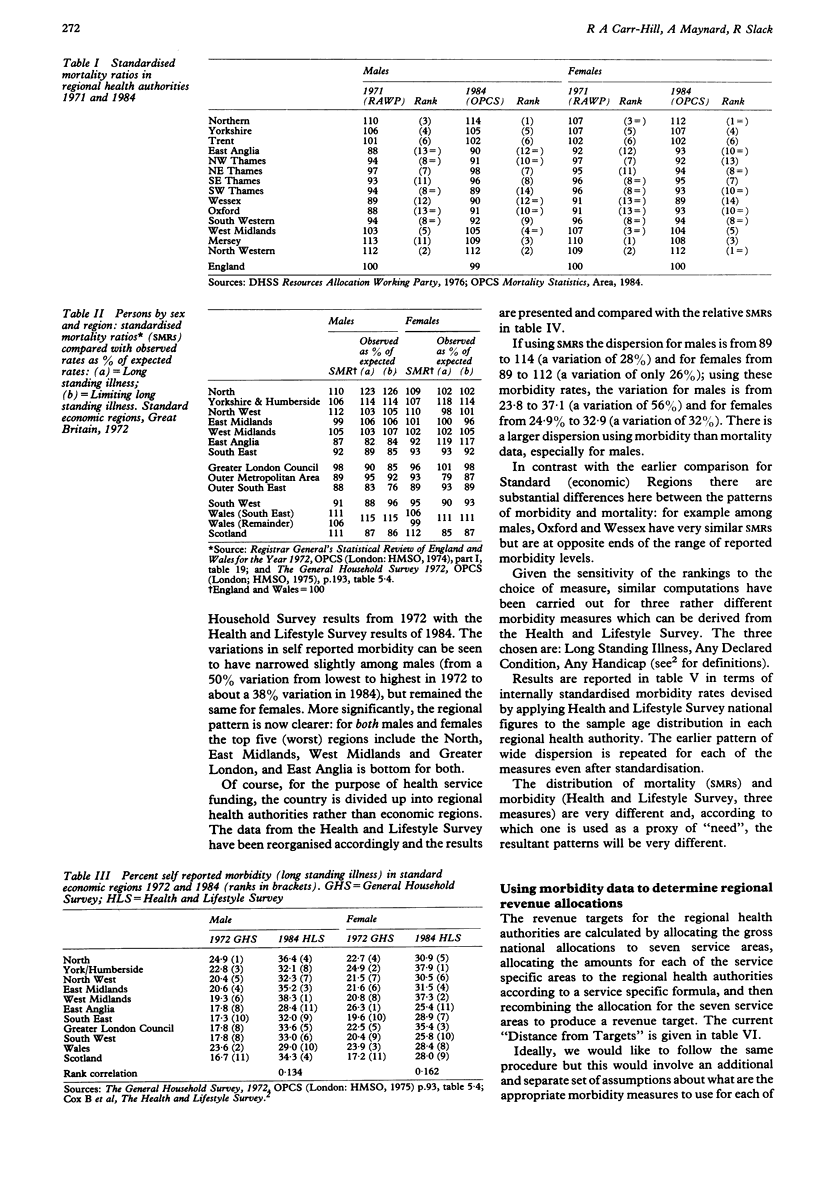Abstract
STUDY OBJECTIVE--Resource allocations from the central government to the English health regions are determined by population levels adjusted by relative standardised mortality ratios (SMRs). The White Paper Working for Patients proposes that allocations should in future be based on capitation adjusted by some other measures of health. The aim of this paper was to investigate the effect of using morbidity data in the weighting algorithm instead of relative SMRs. DESIGN--Morbidity data were obtained from the Health and Lifestyle Survey, 1986. Three different measures of self reported morbidity were used (Long Standing Illness, Any Declared Condition, Any Handicap). Population weightings were calculated by national average bed use for these conditions and again for SMRs. SETTING--This was a national survey using data from all the English health regions. MAIN RESULTS--All three measures of morbidity showed a wider variation between regions than SMRs, and the weighted populations showed a correspondingly wide variation (approximately double that obtained when using SMRs). CONCLUSION--The weighting of populations will be crucial in determining resource allocations to budget holders, whether in the hospital or primary care sector. However without a prior agreement on what counts as "need", the choice of these alternative measures will be arbitrary.
Full text
PDF


Selected References
These references are in PubMed. This may not be the complete list of references from this article.
- West C. E. Injury to Internal Carotid Artery in Curetting Tympanic Part of Eustachian Tube. Proc R Soc Med. 1913;6(OTOL):28–29. [PMC free article] [PubMed] [Google Scholar]


